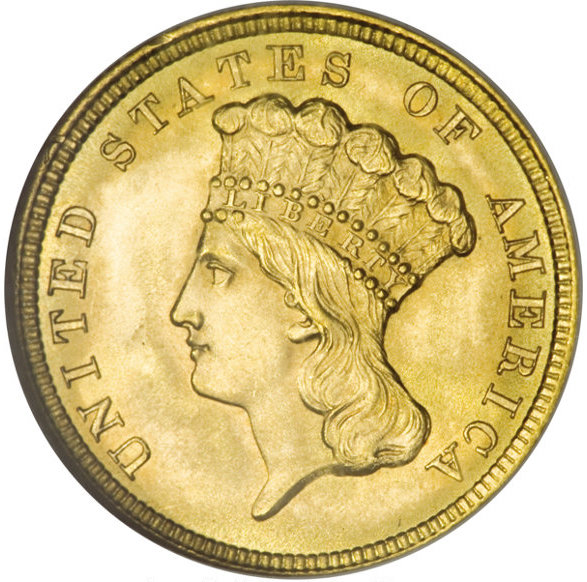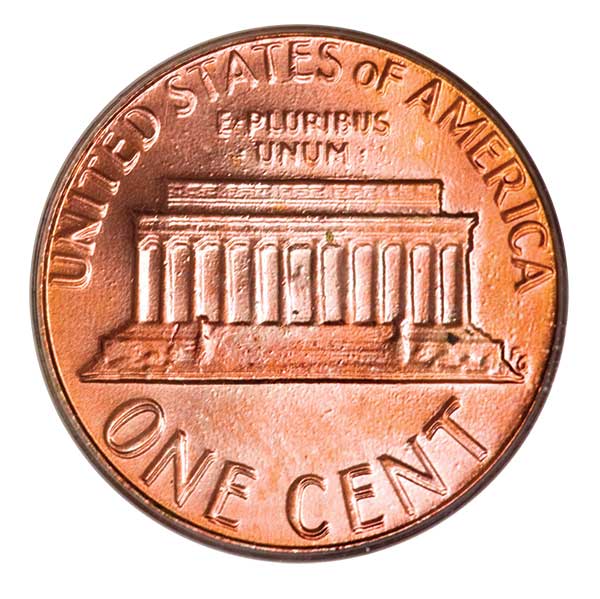$5,000 Gold in 2019? In My Dreams!
"Ka-ching! Gold going bonkers today at $5,000 per ounce…" Those were the words I heard CNBC’s Jim Cramer exclaiming on his Mad Money show, or at least that’s what I recall him saying in a vivid dream I recently had. I remember looking down at my mobile phone and seeing the London Metal Exchange reporting $5,081 per ounce. I pulled up my CDN Pricing App – same thing: $5,081 per ounce.
Editors Note: This is an article McMorrow-Hernandez wrote for COINage magazine and is reprinted here with permission.
“Ka-ching! Gold going bonkers today at $5,000 per ounce…” Those were the words I heard CNBC’s Jim Cramer exclaiming on his Mad Money show, or at least that’s what I recall him saying in a vivid dream I recently had. I remember looking down at my mobile phone and seeing the London Metal Exchange reporting $5,081 per ounce. I pulled up my CDN Pricing App – same thing: $5,081 per ounce. Wall Street Journal… Oops, gold ticked down slightly to $5,079. The next moment, Monex showed $5,077. I asked myself, “what’s happening? A rapidly expanding bubble that suddenly burst or just late-afternoon trading jitters?” I don’t recall much else from the dream, but I remember the date – it was September 19, 2019. In other words, 9/19/19.
My heart racing, I popped up from my slumber in a cold sweat, nearly hyperventilating. I clutched the sheets… They were real. But the dream? It was just that: a dream. I remember glancing at the clock on my nightstand. The red LED numerals seared into my sleepy eyes, declaring the time to be 3:33 AM. It was still more than two hours before my alarm would beckon the start of another day for me. But I was ahead of the clock – my day had begun hours earlier than I anticipated. I couldn’t go back to bed now. Too many questions were nagging my noggin.
Why was gold suddenly up over $5,000 an ounce? What global chaos would have pushed gold beyond $5,000 in 2019? Would I want to be living in a world in which it was justifiable that gold suddenly surges more than 300% over its 2018 average to shoot past $5,000 an ounce? Did my dream-state me invest in any gold before the dreamy boom? Did the coin market benefit as a result of this sudden change in the bullion winds? And what was up with all of those 9s? Could this dream become a reality in 2019?
I figured out the logic behind all of those 9's pretty quickly… The numismatic world has seen some pretty important events happen in years that end in 9s. One of the most drastic boom-bust bullion cycles began in earnest 40 years ago, in 1979. A decade later, we had the catastrophic market crash that sent prices of high-grade certified coins – the kind that briefly attracted heavy Wall Street speculation – plunging into the basement in 1989. In 1999, the 50 State Quarters launched as one of the most successful numismatic initiatives in American history, creating (for a short time) more than 100 million new coin collectors, according to figures from the United States Mint. And, in 2009 a global recession pushed investors toward buying precious metals, creating unprecedented demand for American Silver Eagles and other bullion products, sending gold and silver prices to new heights. So, what happens in this next “9” year: 2019?
Before answering that question, let’s step back for a moment and see what $5,000 gold really looks like. What does it mean for our hobby? For investors? For the world? And, most importantly, is 2019 the year that gold really makes that long-anticipated move toward $5,000?
***
Call me crazy if you will, but gold at $5,000 an ounce isn’t really an outlandish proposition. Not in these times. Not in this brave new world. Not in a world where Bitcoin can flirt with $20,000 a unit. Not in a world where tariff tiffs with China and trade wars with Canada play out like a daily drama. Not in a world where the United States scrapes at its longstanding relationships with many foreign nations and flirts with isolationism. Not in a world where certain countries proudly brandish their nuclear arsenals. Not in a world where domestic terrorism hits nightclubs, houses of worship, and schools. Not in a world where international terrorism places familiar landmarks great and small in the crosshairs. Everyday more and more people fear what the next “BREAKING NEWS” banner rolling across the TV screen portends, and they’re increasingly nervous scrolling through their social media feeds awaiting the next horrific tragedy.
What do people do when they’re afraid? Many stay closer to home. Some take time off from work to spend with their families. A few folks stock up on survival provisions and go off the grid. Most of us eat their favorite comfort foods, watch old reruns of I Love Lucy or Cheers, and reach out to old friends. Investors reach out to old friends, too – one of these friends is more widely known as “gold.” And when times are tough, good ol’ gold shines a little brighter and proves far more reliable than flakier acquaintances, such as at least one Johnny-come-lately who goes by the name Bitcoin.
Good friends are rare, and so goes gold, at least in the relative sense anyway. If all the gold ever known to humankind were reclaimed by a wicked ambitious trillionaire and stored in a vault, that holding space wouldn’t need to be much bigger than a typical suburban mid-rise office building. Every last grain of gold ever mined and refined could fit within a 70-foot cube. Think about that for a moment. That’s every gold coin, every gold watch, every gold necklace, every gold statue, every gold bobble… In the scheme of things, a seven-story cube of gold in a world as big as ours isn’t really a lot of gold at all.
There are more than 7.7 billion people around the globe in 2019, and how many of them lust for gold? Put a more direct way, there just isn’t enough gold to go around. And when countries start feuding with one another, inflation begins mounting, and people don’t know what’s bound to happen next, they usually turn to the yellow metal that civilizations around the globe have treasured since the 4th millennium BC.
As a new United States Congress sees 435 lawmakers – many merely neophytes to Capitol Hill – take their seats, a divided Senate face numerous tough issues with international consequences, and a controversy-embroiled President Donald Trump begin stumping for reelection in 2020, Americans wait and wonder, “what’s next?” Meanwhile, the world is anxiously watching us. Investors are sitting on the sidelines – and many are calling upon their old, golden friend for moral support.
But let’s get one thing straight. While many people think of gold as an “investment,” we mustn’t forget what this precious metal really is: an insurance policy against socioeconomic chaos. And who among us isn’t thankful for the protection of an insurance policy when tragedy suddenly hits home?
***
The year 2019 is here, and none of us know the kind of headlines this new year will spawn. We can hope for the best but must prepare for the worst, and many of those who are preparing for the worst are stocking up on gold as you read this. But does gold make a break for $5,000 this year?
Let’s say it does. And we could be one major, prolonged international crisis away from this. We don’t need a nuclear winter scenario here – that’s when people stop caring about precious metals and simply want safe shelter and things they can eat and drink. But in a trying socioeconomic crisis – widespread double-digit inflation, collapse of the world markets, or another oil embargo? In those cases, people are buying gold. And prices could skyrocket in a matter of weeks – $2,500, $3,000, $4,000, $5,000. These price hikes wouldn’t last forever. They’re fueled by frenzy-driven speculation. As the economic conditions improve and the gold fever cools, prices eventually come back down. But, with gold on fire, what happens next?
Several things happen next. Chief among these? Numismatic sees a day in the sun like it hasn’t ever before. Millions of Americans become coin collectors overnight, urged by surging market prices and looking for something to distract themselves from news of some depressing international nightmare. And, they’re buying complete sets of 90% silver Washington quarters and Franklin half dollars (because silver improves in this scenario alongside gold, too). They’re stacking American Gold Eagles in personal vaults and bank deposit boxes. And they’re stalking websites like eBay and APMEX for pre-1933 $20 gold double eagles and $10 eagles, because these are among the collectible coins with the lowest premiums over spot and suddenly became scarce in the marketplace.
Many of these classic gold coins head for the melting pot, their surviving counterparts becoming ever rarer in the numismatic world. Aware of this, some coin collectors merge their desire for gold with a newfound love for numismatics and build handsome four-piece and 12-piece pre-1933 gold type sets with the help of museum-quality Capital Plastics holders. Yet, others venture beyond bullion altogether and find themselves wonderfully lost in a numismatic world of early type coins, Liberty Seated pieces, Barber coinage, and classic commemoratives. Many of these particular new collectors are the ones who will probably stick around in the hobby after the $5,000-gold bubble bursts. They’re the ones who eventually won’t care whether gold is $500 or $5,000 per ounce. They’re now in it for the sake of numismatics. I can see it already. Can you?
$5,000 gold also brings some unexpected pleasant surprises. For example, remember those gold-plated copper Buffalo rounds you regrettably bought for $19.95 after watching that 2 AM infomercial a few years ago? They’re now actually worth something, as the micron-thick layer of gold coating on those cheap copper rounds suddenly boasts a monetarily small but significant yield of gold. The 24k gold flakes floating in that little souvenir vial you bought at the Yukon gift shop in Alaska? That’s worth more than a few bucks, too. And the dusty gold-tipped tea cups you inherited from Aunt Mildred in Boston years back? Yep – they’re also now valuable beyond sentiment alone.
Got any gold fillings? Well, you might want to keep those – you don’t want to figuratively lose your head by physically putting more holes in it. After all, in a world of $5,000 gold, the last thing you want to do is lose your common sense. And for all the wild talk of where gold could head in 2019, we need plenty of common sense and a parade of numbers to help keep our feet on the ground.
***
What does $5,000 gold really mean for the hobby? This is a question that may be answered by drawing on data from past bullion booms and seeing what conditions for the hobby were like then. In the last five decades years, there have been two major runs on the gold market, including the periods spanning 1979-81 and 2008-13. During those times, gold prices reached both nominal and inflation-adjusted records, creating complex dynamics in the bullion arena that leaked into the numismatic realm. After both spikes, new pricing “floors” were achieved for gold. And that has set new market standards – and expectations – for what gold prices could do both now and in the future.
In the years immediately preceding the 1979-81 boom-bust cycle, gold hovered around the $150-per-ounce mark. However, it must be remembered that prior to 1974, Americans endured a 40-year ban against hoarding gold bullion, a result of Executive Order 6102 signed by President Franklin Delano Roosevelt in 1933 forbidding United States citizens from owning large amounts of gold. President Gerald Ford lifted that ban on December 31, 1974 – just a few short years before gold began its meteoric rise to $850 an ounce in January 1980.
So, what happened to spur gold prices to reach for $1,000 nearly 40 years ago? Think about the tensions of the late 1970s and early ‘80s: the Iran hostage crisis, rising fuel prices, double-digit inflation, upward-spiraling interest rates, staggering unemployment, the Cold War. They weren’t very good times for many Americans or for the national morale, let alone the economy. Looking back at the coin market of that period, we see that bad news on the socioeconomic front didn’t necessarily dampen the spirits of deep-pocketed coin collectors.
According to The Monthly Greysheet, which has served as a pricing standard for the coin industry since 1963, many areas of the numismatic market in the late 1970s and early 1980s were experiencing bullish conditions. “Type Coins Soar To New Record Levels” exclaimed the headlines on the January 25, 1980 issue of the Greysheet, published just as gold reached a fever pitch. Of course, generic gold (and silver) coins saw the predictable bullion-induced gains, but numismatic gold, largely unaffected by bullion price changes, also saw some tremendous growth.
Bid prices for 1903 Louisiana Purchase and Jefferson & McKinley gold dollar coins surged 250% from $400 each in January 1979 to $1,400 apiece a year later, while the 1926 Sesquicentennial $2.50 improved from $230 to $950 during that same time for a 313% gain, and the 1915-S Panama-Pacific gold dollar increased 490% from $500 to $2,950. Meanwhile copper, nickel, and silver type coins across the board enjoyed major boosts from the increased market speculation, with MS-65 type coins from Draped Bust half cents through Trade dollars all posting significant gains during that time.
Among the bright spots in our hobby at that time were the four sales of the Garrett Collection held from 1979 through 1981. The Garrett Collection was first assembled by T. Harrison Garrett, son of Baltimore & Ohio Railroad President John Work Garrett, in the 1860s and continued growing with the next generation. The collection included coins ranging from colonial pieces to 20th-century commemoratives and included the sale of an Extremely Fine 1804 Draped Bust dollar that took $400,000 and the finest-known 1787 Brasher Doubloon, which made international headlines upon selling for the (then) world-record price of $725,000 in 1979.
By the end of 1981, gold eased below $500 an ounce and the market frenzy chilled. Greysheet reflected settling bid prices for numismatic type coins, high-grade silver dollars, and other pieces not solely influenced by bullion factors, with only high-grade gold commemoratives and strictly graded MS-65 silver dollar showing any signs of buzz at that time. Gold, meanwhile, found its new floor in the $300s beginning in 1982, never again returning to its pre-1979 prices.
Following a short drift below $300 in the late 1990s, investors influenced a new bull market for gold beginning in the early 2000s, following troubles with tech market stocks, the 9/11 attacks, the decline of the dollar, and inflation fears. Investors shifted their focus to safe havens, gold chief among these, as the Great Recession took hold in 2007, and by 2008, gold was poised to eclipse its 1980 record. Gold appeared headed for $2,000 during a run in the summer of 2011, briefly passing the $1,900 in late August before precipitously drifting downward again.
The Greysheet headline for the week of August 23, 2011 was “$1,900 Gold & $72 Million Sold,” the latter a reference to the tremendous results at the ANA World’s Fair of Money in Chicago, which Greysheet reported were “most likely connected to the precious metal strength.” Indeed, gold was hot, but as editors noted, “collector coins were very good sellers as well, and the market for six-figure and higher rarities was very active.”
For example, an extremely rare 1975 no-S Roosevelt dime graded Proof-68 by Professional Coin Grading Service (PCGS) took $349,600 in a Stack’s Bowers offering, easily becoming the most valuable U.S. copper-nickel clad coin. Also taking in big bucks at the Stack’s Bowers ANA sale in August 2011 was a PCGS-graded PR66 Deep Cameo 1885 $20 Liberty designated as a better-quality example by Certified Acceptance Corporation (CAC) that went for $230,000, a PCGS MS64 1799 Capped Bust 13 Leaves $10 eagle that commanded $207,000, and a Proof-68 Ultra Cameo 1879-O Morgan dollar graded by Numismatic Guaranty Corporation (NGC) hammering at $158,125.
Since peaking once again in August 2011, gold has bounced between $1,150 and $1,300 over the last few years, with a brief dip below that figure and a few short-lived teases above. Many key indicators within the coin market have also been bouncing around over the past half a decade. Yet, as evidenced by historic market data presented here, numismatics receives a shot in the arm when bullion prices surge upward. Much of this is due to existing collectors becoming more enthusiastic about positive market trends and non-collectors being lured into buying coins for speculative purposes, with some eventually embracing the hobby as a long-term pastime rather than just short-term amusement.
Therefore, it’s logical to conclude the hobby would enjoy immense growth from headlines declaring $5,000 gold in 2019. And it’s a dream scenario that could benefit not only the more popular series boasting significant bullion content, such as 20th-century 90% silver and gold issues, but it may also help awaken sleepers that haven’t seen much activity in years, including classic commemoratives, 19th-century odd denominations, vintage coppers, and many others.
***
What are the chances that gold could reach $5,000 in 2019? It would probably take an unlikely parade of jolting events occurring in quick, shocking succession for that scenario to play out over the next 12 months. Inflation would have to spiral out of control, the dollar would have to suffer in the international markets, major world superpowers in Europe and Asia would need to slide into deep economic decline, and oil prices would need to surge past record highs. Thankfully a mass-casualty catastrophe such as nuclear warfare isn’t necessary to see $5,000 gold, but situations would nevertheless become very uncomfortable for countless people. Is $5,000 gold really worth such sudden socioeconomic misery?
Let’s step back in time once more for a moment and consider something else… The price of gold in 1980 was $850, which adjusted for inflation today is equivalent to more than $2,500. Even the $1,900 gold of 2011 now equates to about $2,100. In other words, with the nominal price of gold currently hovering around $1,200 per ounce (as of this writing), gold would have to double that figure to even begin approaching all-time highs when price comparisons are made with the consideration of inflation.
Is $5,000 gold necessary to lure the masses into coin collecting? It would certainly help, but even if gold crossed, say, the $2,000 threshold – or, even better, the $2,500 mark – in 2019, we would see phenomenal growth among the ranks of our hobby.
Still, $5,000 gold is a prediction that analysts have been making for several years now. Of course, if gold keeps pace with inflation, there will indeed come a day, though perhaps many years from now, that long-anticipated numerical threshold is passed due to more benign, organic economic circumstances. But if there’s anything we know about bullion markets, it’s that surprises are never very far away. Perhaps some very big surprises are in store for 2019. Stay tuned!

Download the Greysheet app for access to pricing, news, events and your subscriptions.
Subscribe Now.

Subscribe to Monthly Greysheet for the industry's most respected pricing and to read more articles just like this.











